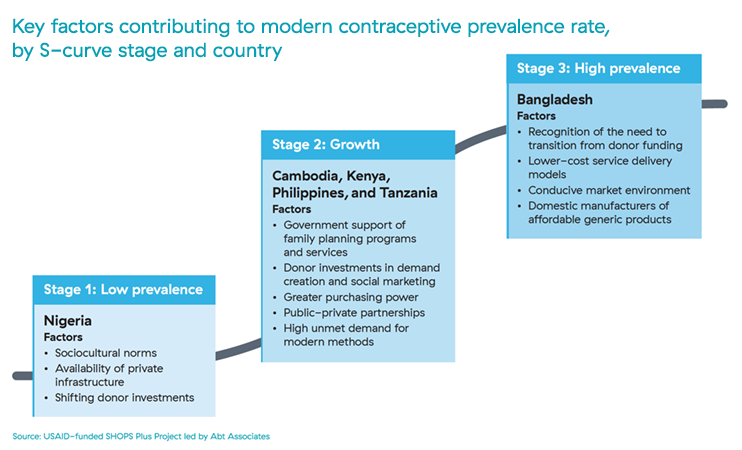Factors Influencing the Private Sector's Contributions to Family Planning Market Growth: A Synthesis of Six Country Analyses
A review of trends in modern contraceptive prevalence rates across low- and middle-income countries has led stakeholders to develop a normative S-shaped pattern for how family planning markets grow. In this model, low prevalence and little growth occur on one end, with high prevalence and low growth on the other, and a period of potentially rapid growth in between. Understanding what specific types of interventions work best at each stage of the S-curve can help countries better leverage the resources available in the private sector and accelerate achievement of their national family planning goals.
Image

The USAID-funded SHOPS Plus project analyzed six countries where (1) the private sector has played a significant role in the family planning market and (2) the private sector role has increased as the modern contraceptive prevalence rate grew. Drawing on Demographic and Health Survey data, as well as key informant interviews with market experts, individual country briefs highlight the macro-environmental, sociocultural, policy, and programmatic factors that facilitated, or in one country example, inhibited, the overall market and private sector contributions in these countries. This synthesis pulls out country findings across the six countries and makes recommendations for donors, governments, and the private sector. These recommendations, organized around the three S-curve stages, are intended to help family planning stakeholders consider how to make more targeted investments in their private health sectors to help countries and individuals achieve their voluntary family planning goals.

